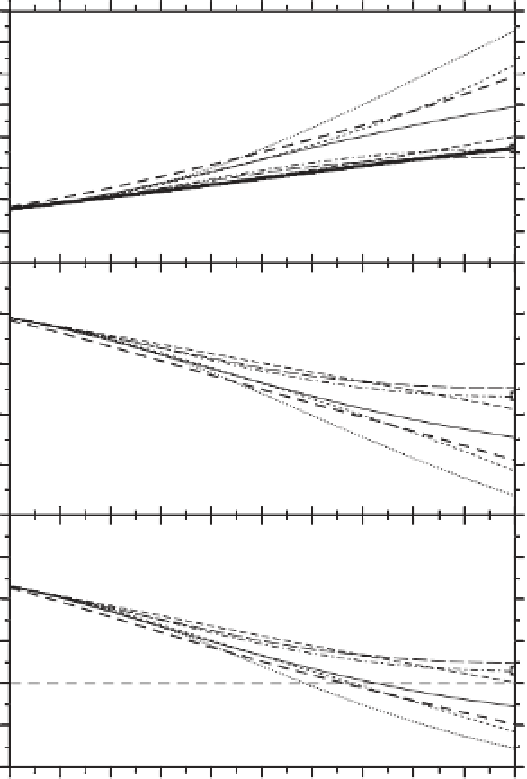Geoscience Reference
In-Depth Information
Future projections are made with models in order
to also account for waters that are not in equilib-
rium with atmospheric CO
2
, including high-latitude
surface waters and the deep ocean. In the polar
oceans, where [CO
3
2-
] is naturally lower, models project
that during the 21st century [CO
3
2-
] will drop under
a critical threshold, below which waters become
chemically corrosive to aragonite. Some Arctic
surface waters are projected to have annual-mean
concentrations that will start falling below this
threshold within about a decade under all
SRES scenarios. For some surface waters of the
Southern Ocean, this critical saturation concentra-
tion is reached later, but still by 640 ppmv for the
annual-mean level; in winter, the same critical level
is i rst reached at 450 ppmv. As future [CO
3
2-
]
declines further, a second threshold is reached,
below which waters become corrosive to all forms
of CaCO
3
, including the most stable form, calcite.
These severe conditions could be prevalent over
much of the surface Arctic Ocean by the end of the
century. Anthropogenic CO
2
is also penetrating into
the deep ocean, altering subsurface carbonate chem-
istry and causing the ASH to shoal. The greatest
(A)
2000
2020
2040
2060
2080
2100
1000
900
800
700
600
A1B
A1FI
A1T
A2
B1
B2
IS92a
S650
500
400
300
200
8.2
(B)
8.1
8.0
7.9
7.8
(C)
1.8
7.7
1.4
1.0
0.6
2000
2020
2040
2060
2080
2100
Year
Figure 3.7
Simulated 21st-century atmospheric CO
2
(A), global average of surface-ocean pH
T
(B), and mean surface Ω
a
for the Southern Ocean (C)
projected by the University of Bern Physics Institute (PIUB) ocean model forced under different IPCC emission scenarios. The square symbol indicates the
projected result for the S650 scenario in 2099. The older IPCC S650 and IS92a scenarios bracket most of the results as do the newer SRES B1 and A2
scenarios. Adapted and redrawn from Meehl et al. ( 2007 , Fig. 10.24).





